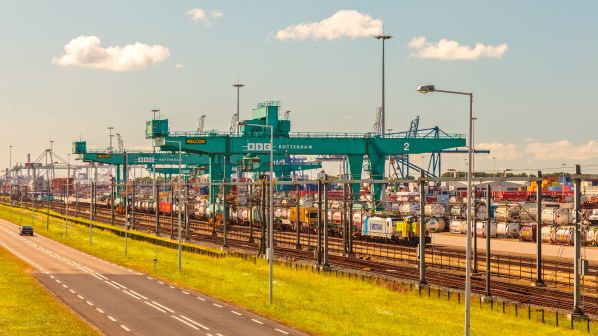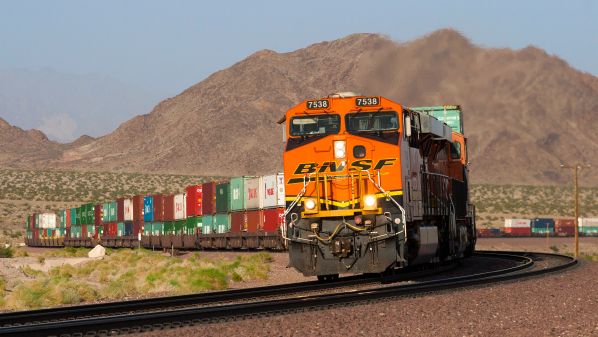THE economic benefit and resilience of moving freight by rail has been highlighted during the Covid-19 pandemic. While road haulage worldwide was hard hit by restrictions in the early stages of the pandemic, railways experienced relatively little disruption. This, combined with rail’s well known environmentally friendly benefits, has enabled the sector to weather the storm during this unprecedented period.
A recent report by Research & Markets, United States, identifies a significant role for rail freight in the world recovery over the next five years with a predicted average growth rate of 2.15%. Taking advantage of innovation will be key to realising this growth.
This year’s World Congress on Railway Research (WCRR), hosted in Birmingham, Britain, on June 6-10, provides a great opportunity to share and learn about new freight driven solutions with colleagues from around the world.
While it can be tempting for railway practitioners to make rapid decisions on new products or processes based on anecdotal evidence, Transportation Technology Center Inc (TTCI), United States, has shown that having an industry-wide research programme empowers objective, science-based solutions. Another benefit from having such a programme is the fostering of teams of experts and appropriate tools such as laboratory facilities, test tracks, and computer simulation software to simultaneously provide continuous, incremental, improvement while quickly addressing any new challenges that might arise.
One example of TTCI’s work is the development of a deterministic high-speed stability bogie hunting assessment method to both determine hunting risks objectively and uniformly and apply any speed restrictions deterministically. Hunting, which poses a risk for derailments as well as equipment and damage to freight, has a threshold train speed at which lateral oscillatory behaviour begins. Hunting intensity generally increases with speed and subsides after speeds drop below the threshold. The onset of hunting is not only based on speed but is also a result of equipment condition and characteristics. Historically, railways managed hunting risks by limiting the speed of an entire group or series of freight wagons based on past adverse experiences, such as derailments or freight damage.
Based on historical wayside hunting detector data, TTCI developed a methodology using a statistical defect rate expressed as the number of bogie passes out of 1 million expected to exceed a hunting index threshold at a given speed. The methodology could be deployed on any railway wherever the wayside hunting performance and the equipment identities and characteristics are captured in searchable databases. The results indicate that using the hunting risk rate methodology to deterministically set speed restrictions can define the restricted equipment population more accurately and optimise the restriction speed for both safety and productivity (train velocity).
Optimisation study
When it comes to rolling stock inspection, TTCI has undertaken a camera optimisation study for wayside machine vision systems (MVS) to investigate different types of coupler securement components and their ability to be viewed by wayside MVS.
North American railways have increasingly implemented MVS imaging technology to monitor the health of safety-critical rolling stock components. However, MVS inspection of certain types of coupler securement hardware has been challenging due to variations both in the design of components and in the configuration of other components in freight wagons that can visually obscure a clean line of sight.
The TTCI study explored a wide range of camera placement positions to effectively identify the coupler securement components that often get obstructed from the view of the MVS in certain wagons. Based on these findings, it was concluded that the obstructions to the view of cross keys and cotter pins experienced by existing MVS could be resolved by installing additional cameras. No one-size-fits-all design that can identify the cross keys in all AAR wagon types exists, so the optimal process will require the design of a modular MVS system.
While it can be tempting for railway practitioners to make rapid decisions on new products or processes based on anecdotal evidence, TTCI has shown having an industry-wide research programme empowers objective, science-based solutions.
TTCI has also worked on a methodology to evaluate the energy management ability of freight wagon draw gear systems, in both yard impacts and in-train environments, to improve component performance and reduce disruptions to train operation. Draw gear systems are important contributors to train performance because they limit the relative motion between coupled vehicles in a train and absorb energy during impact.
Common types of draw gear systems include friction draw gears and end-of-car cushioning (EOCC) units. An EOCC unit is a type of long travel draw gear system that uses hydraulic cylinders instead of standard friction draw gears to absorb energy over a long displacement stroke and improve yard impact performance. EOCC units provide the necessary impact protection for wagons and freight in high force, high acceleration yard environments, but they can cause slack action issues during normal train operation due to their long travel. Recent work in North America has focused on long travel draw gear system designs that provide adequate impact control, similar to hydraulic EOCC units, and limit train slack action, similar to friction draw gears. TTCI is using a combination of simulations and physical tests to evaluate the energy management ability of different draw gear systems.
Britain
Britain’s University of Huddersfield and the Rail Safety and Standard Board (RSSB) will present at WCRR the results of their joint research on how imbalanced loading of freight wagons influence derailment risk, as well as a study on how the use of wheel impact load detector data can significantly improve the identification of vehicle defects in freight wagons.
In the last 12 months, RSSB’s pipeline of freight research, designed to address the specific needs of the British freight community, has expanded to cover topics such as optimisation freight pathing and increasing freight speeds on Britain’s congested mixed-traffic rail network where freight and passenger trains compete for space. RSSB’s research aims to optimise operation by providing empirical evidence of the difference made by alternative pathing options for freight services on the network.
One reason why passenger trains are prioritised over freight services in Britain is the much lower speeds at which freight trains travel. Historically freight wagons have lower braking capability than passenger trains so are required to run at lower speeds to ensure they can stop at a red signal. However, it is recognised that many modern wagons have much better capabilities than the timetable allows for. To address this, RSSB is undertaking research to review current freight train permissible speeds to consider actual braking capabilities.

During the congress, master classes will be held on future freight developments. One of these will be led by Europe’s Rail Joint Undertaking, the successor to Shift2Rail, to provide a comprehensive view of their work in Digital Automatic Coupling (DAC). This innovation provides a route to automatically couple and uncouple a freight train both physically, with the mechanical connection and the brake air line, as well as digitally with the electrical power and connection. The technology is considered a key enabler in creating a modern and digital rail freight sector. DAC futureproofs freight trains by securing train integrity, which is a necessity for ETCS Level 3, without the need for a special end of train device.
DAC not only has the potential to achieve significant time and cost efficiencies through the automation of laborious manual activities, but also ensures a sufficient energy supply for telematics allowing the safe communication of data throughout the train.
The European DAC Delivery Programme was set up to ensure that the potential of this technology is realised, with the former Shift2Rail and current Europe’s Rail programme acting as an enabler. European leaders recognised that for successful and effective implementation of DAC, a coordinated and open approach between all relevant industry, government and intergovernmental organisations is crucial. To this end, the programme has employed a holistic approach to managing the development and the introduction of the technology.
The aim of the programme, supported by the DACcelerate project, is to deliver the European DAC through an integrated shared programme building on research and innovation results and pilots. This will provide the framework for a fast, technically, and economically feasible European-wide roll-out.
The programme is aiming for all freight wagons running in Europe to couple automatically by 2030. To do this, the programme selected a latch type model based on the Sharfenberg coupler that will be manufactured by three suppliers, Wabtec, Voith and Dellner, and for which detailed specifications are now in the final stages of development. The aim is to achieve an open, fully functional, operationally tested, safe and sustainable European DAC open model ready for industrialisation and deployment.
The final open design will have interoperability and safety requirements incorporated to a Technical Specification for Interoperability (TSI). Building on this, the programme will produce cross-border compatible migration and business plans and identify possible funding to support them. In the DAC master class, representatives from Europe’s Rail and the European DAC Delivery Programme will provide key insights from their experience of the programme’s delivery to date.
These are just a few of the rail freight sector insights being presented and discussed at this year’s World Congress on Rail Research. To find out more and to register, visit https://www.wcrr2022.co.uk/

